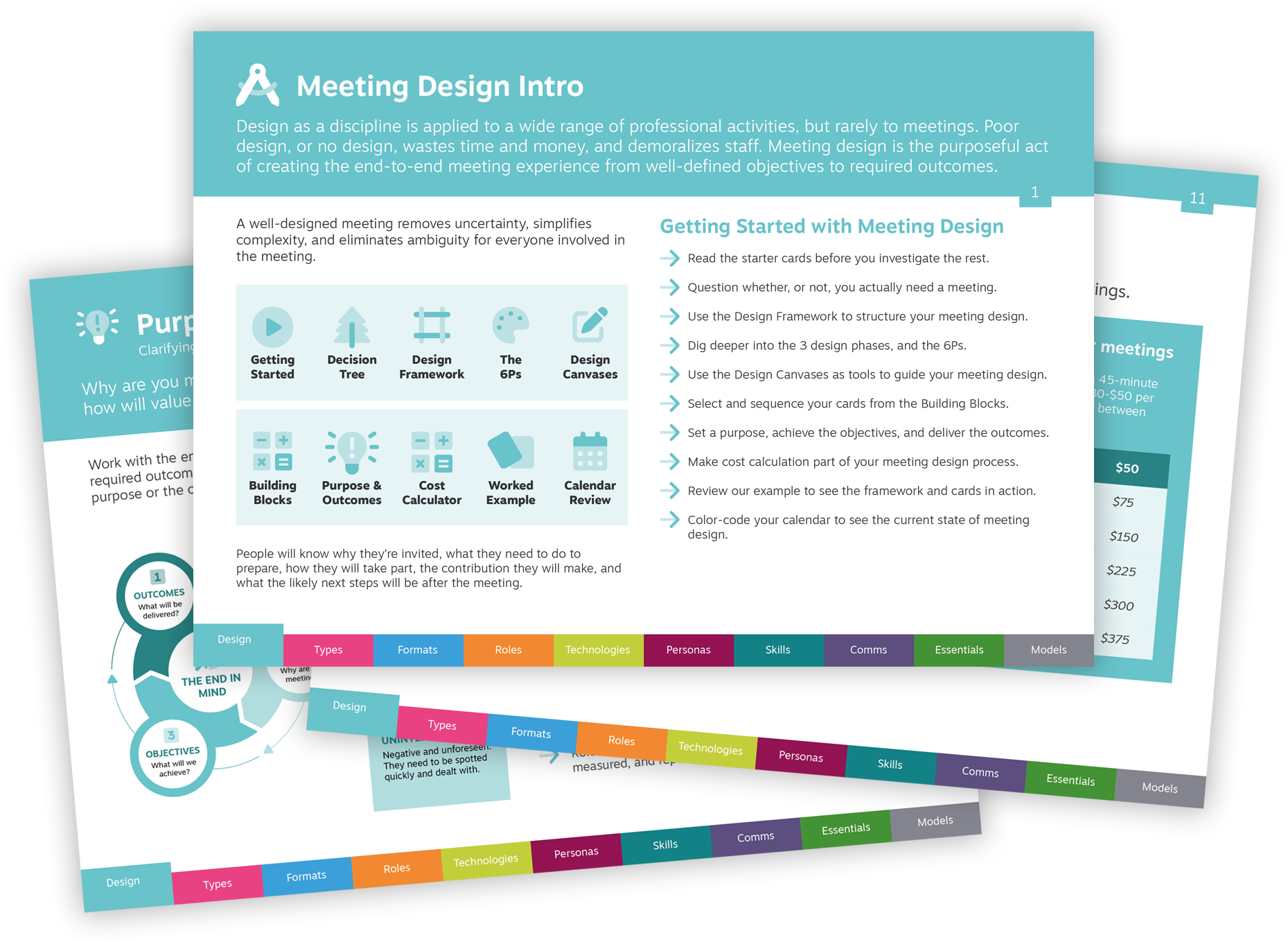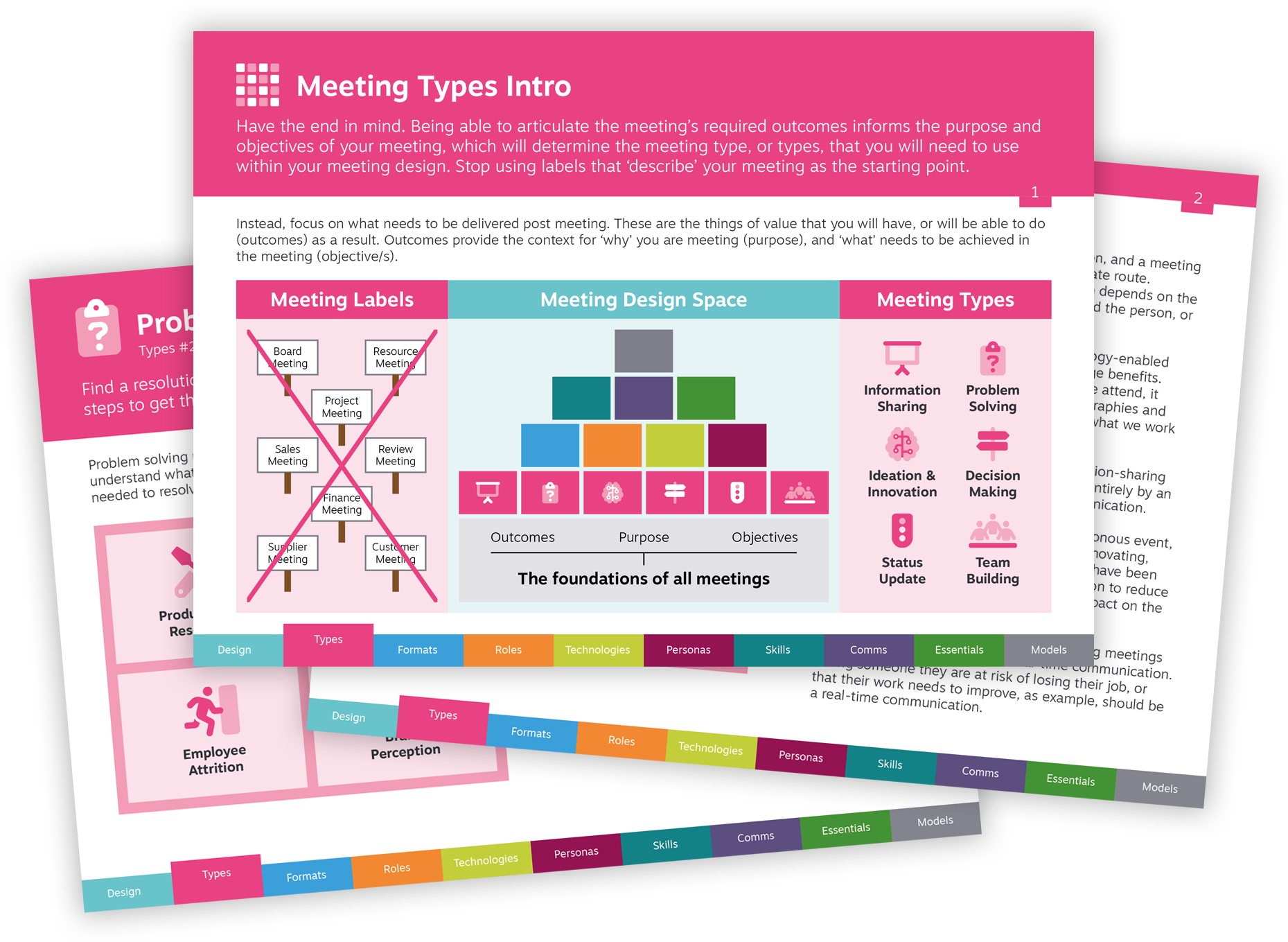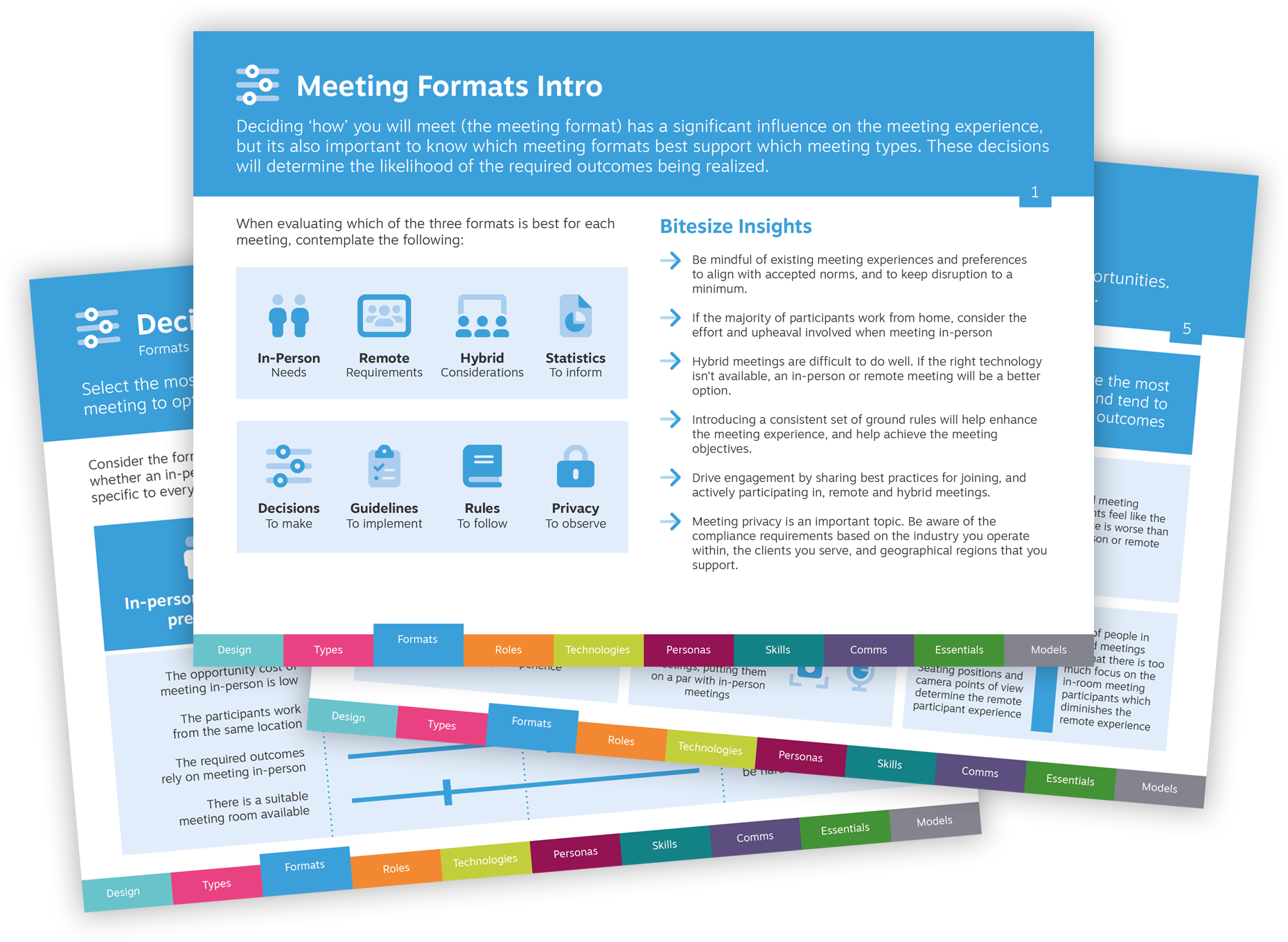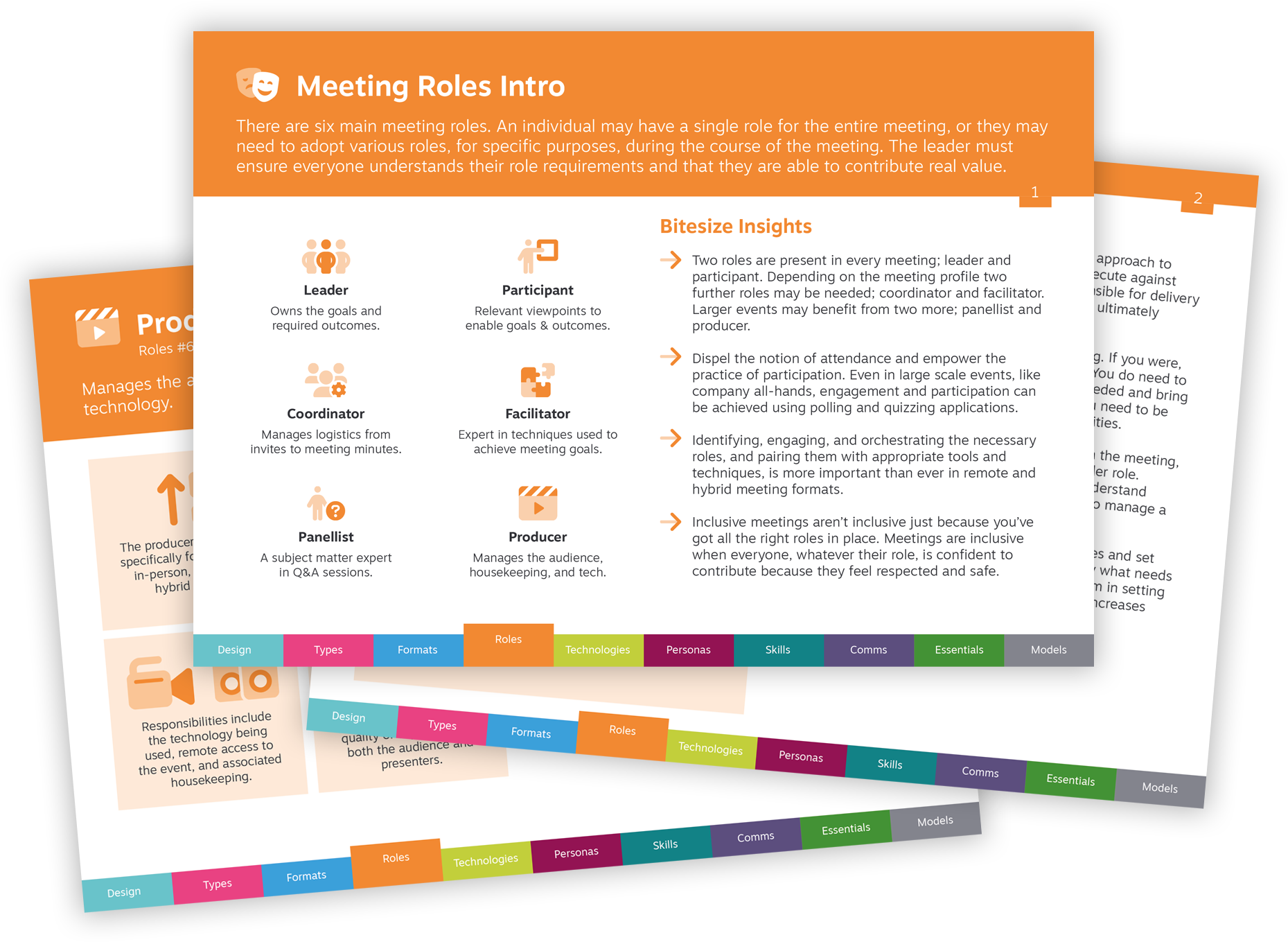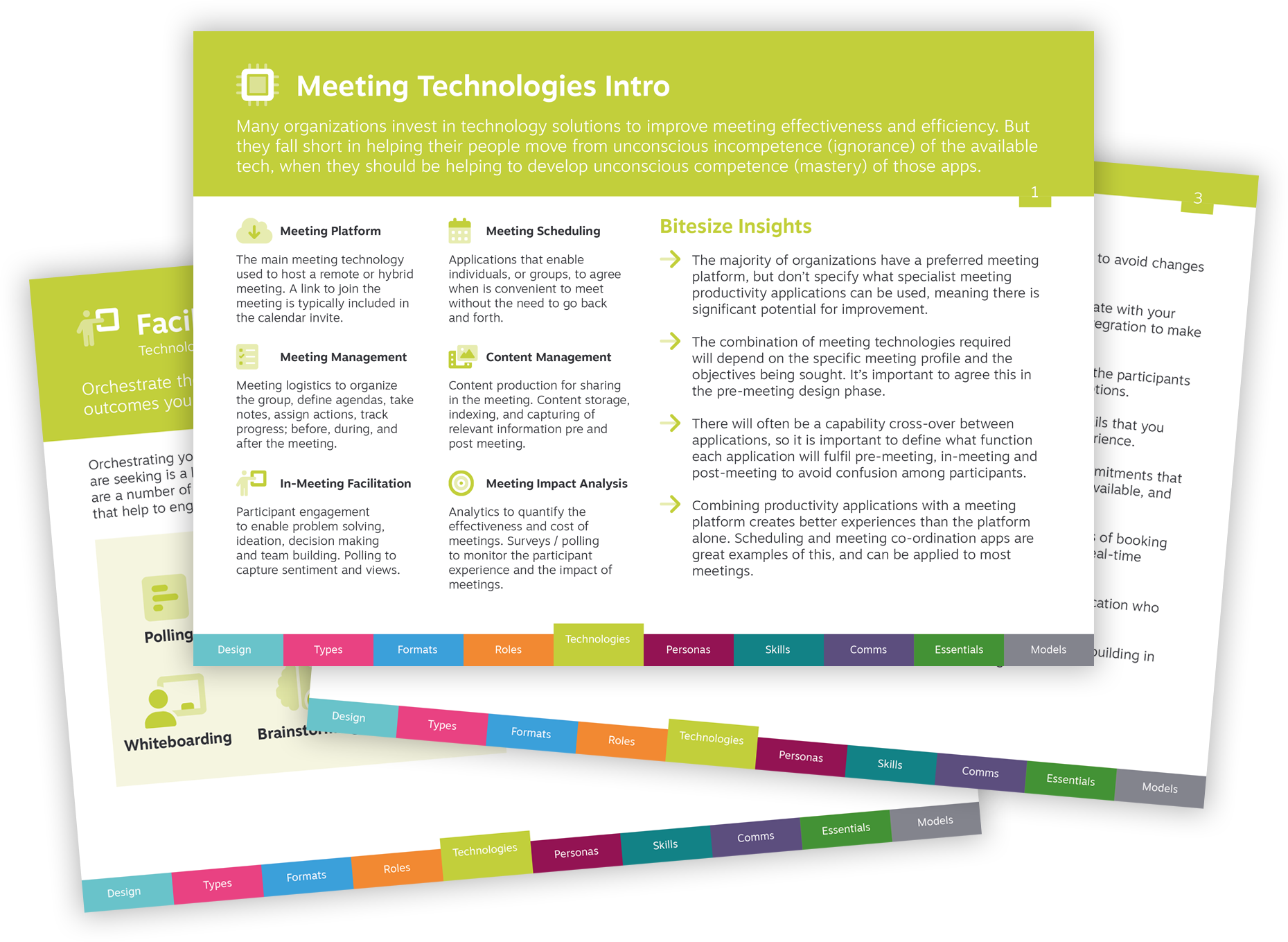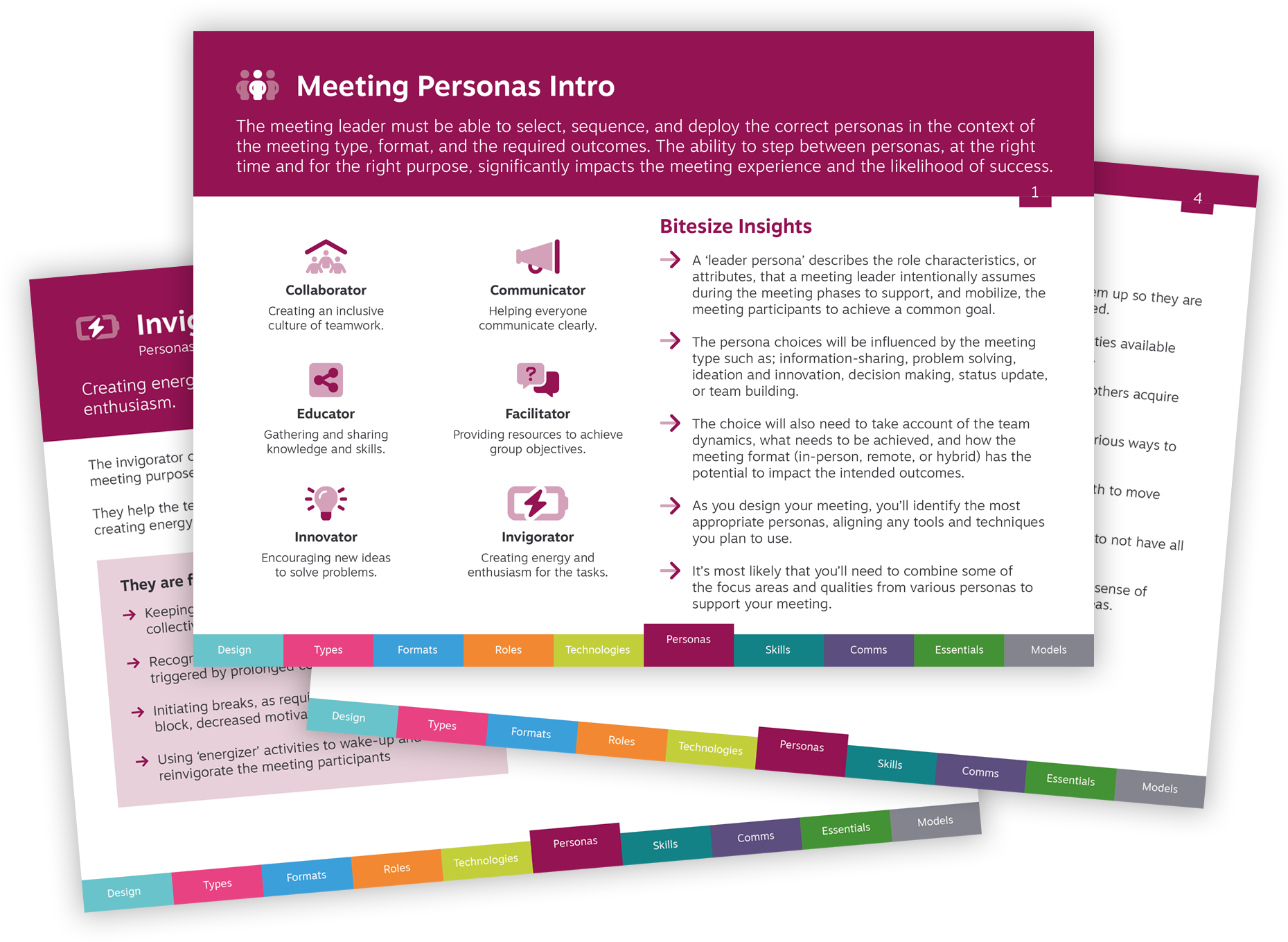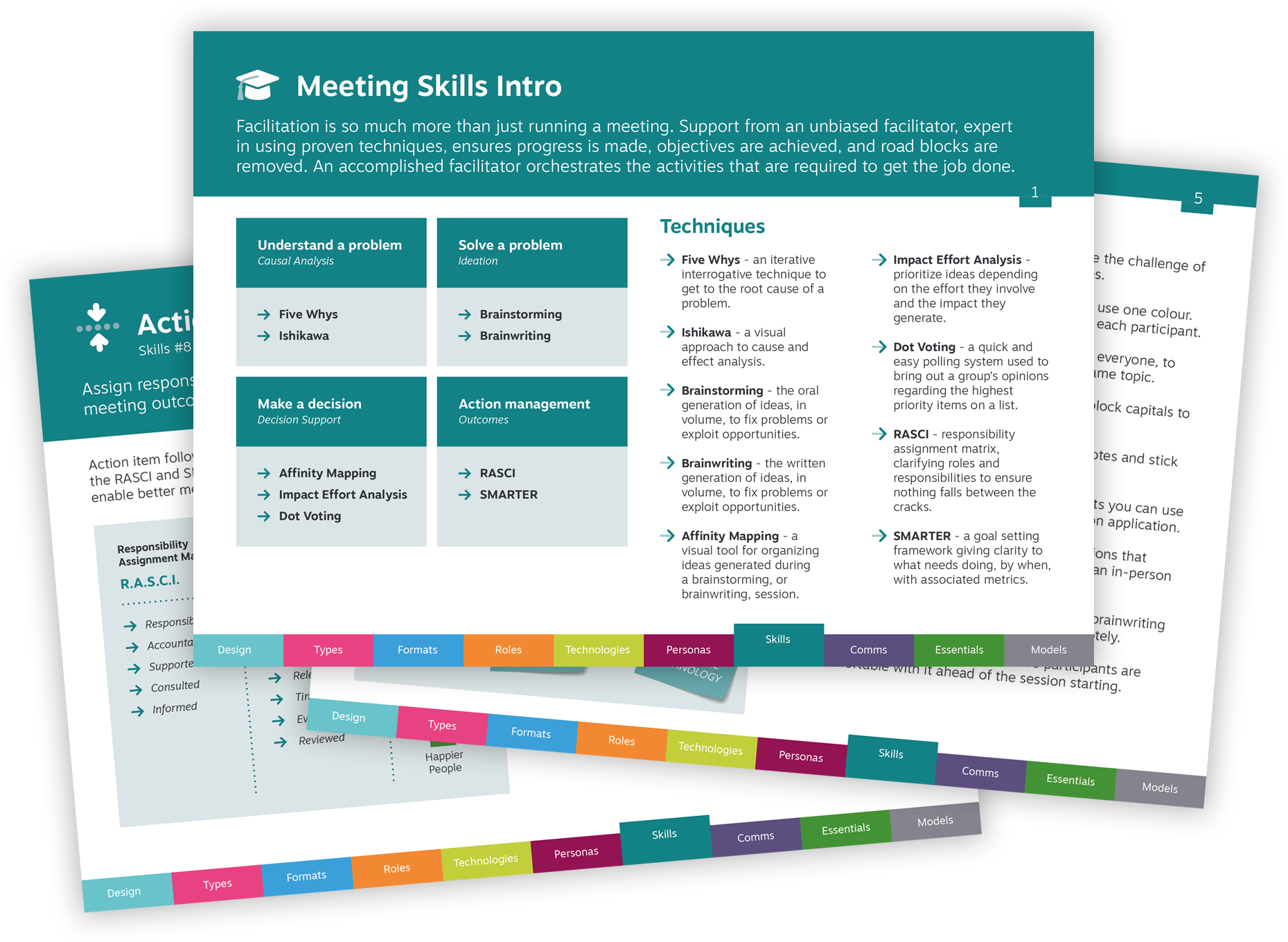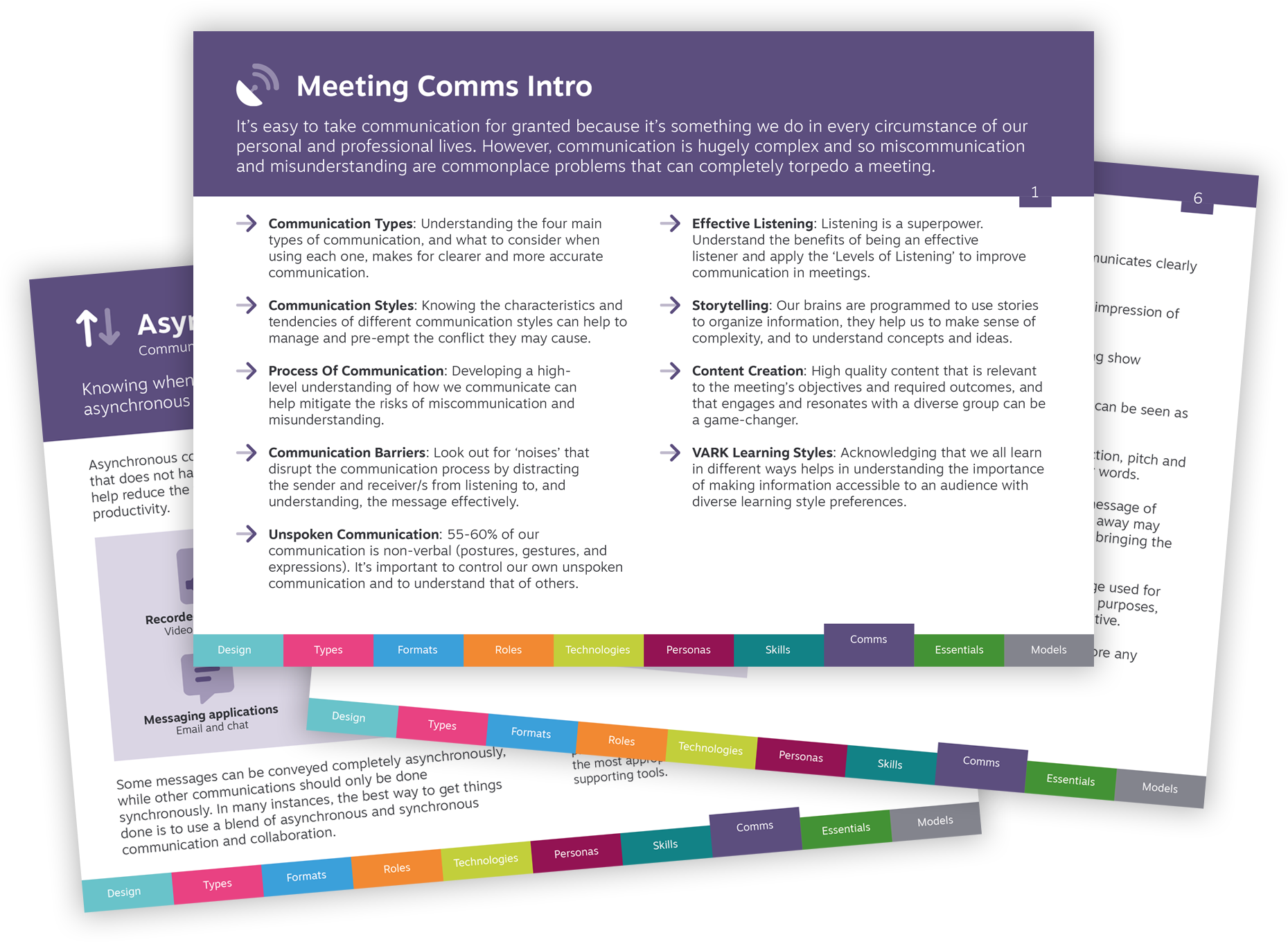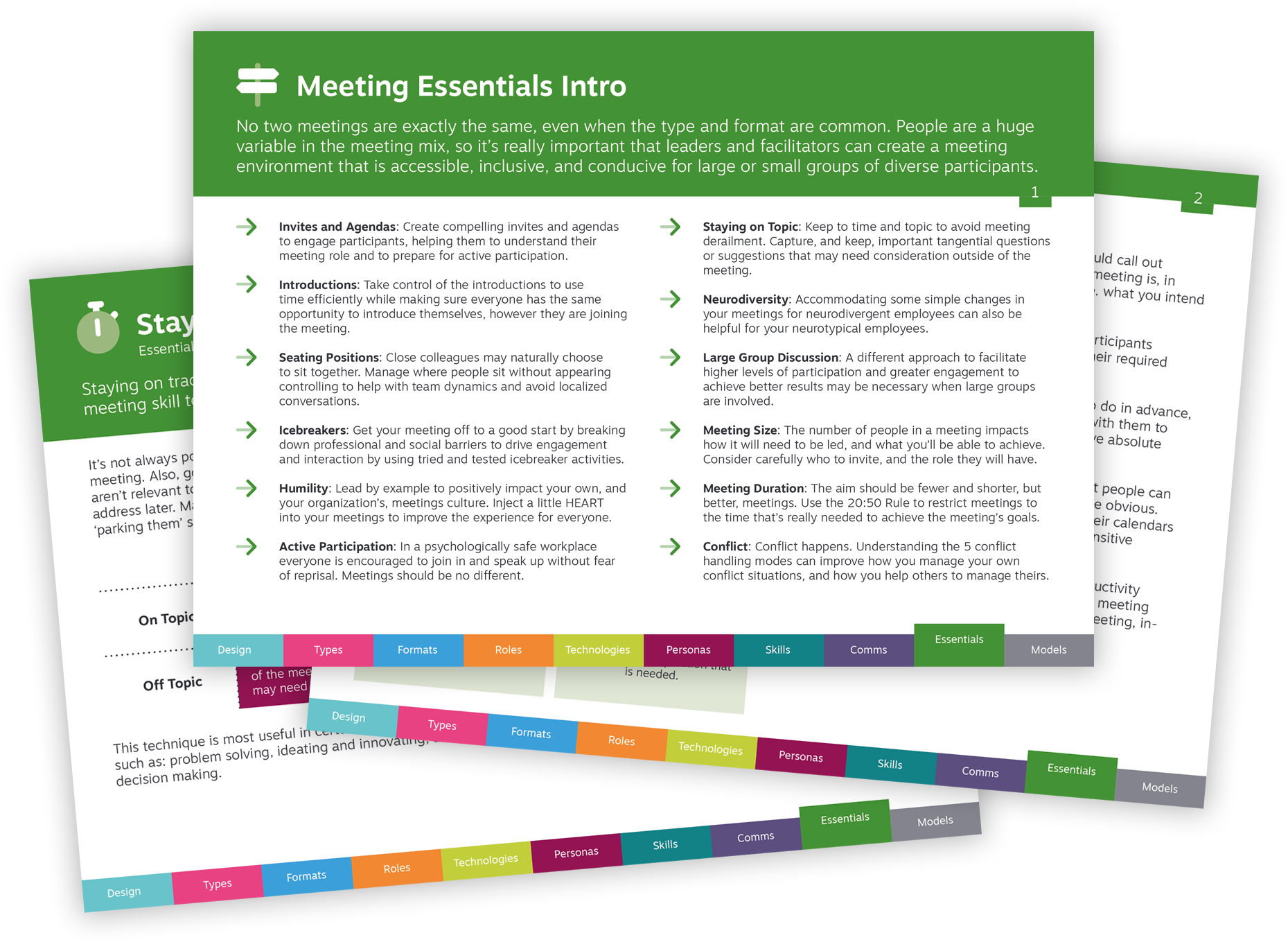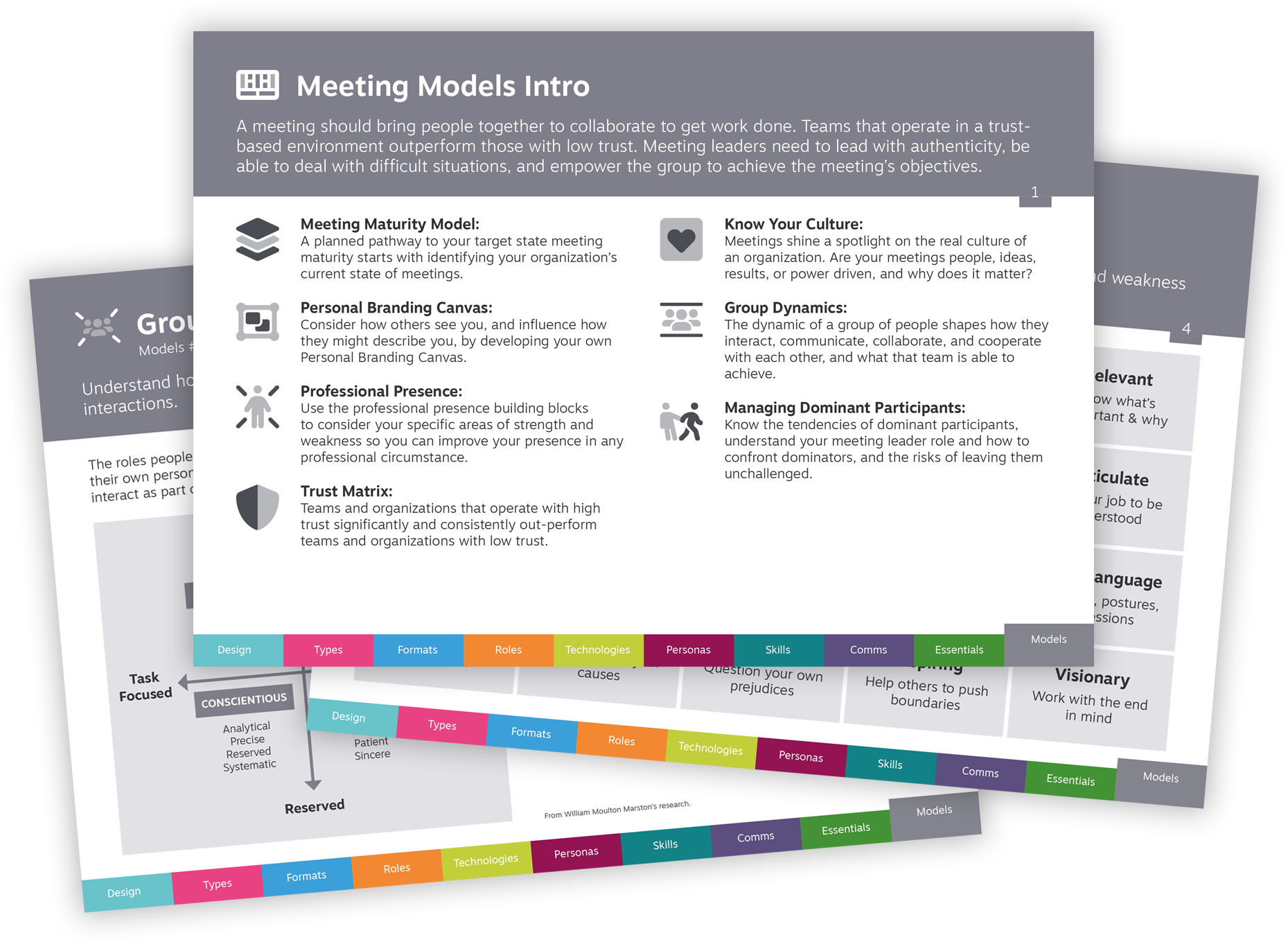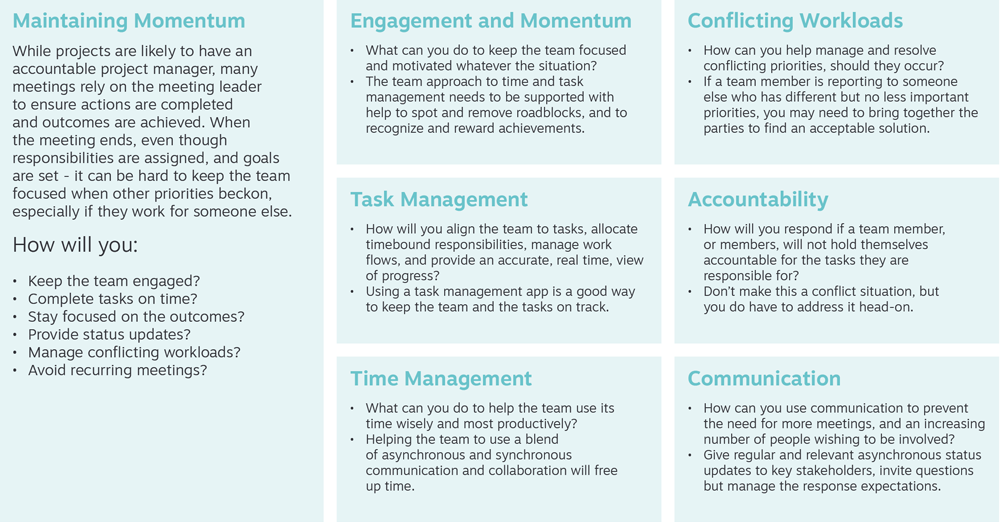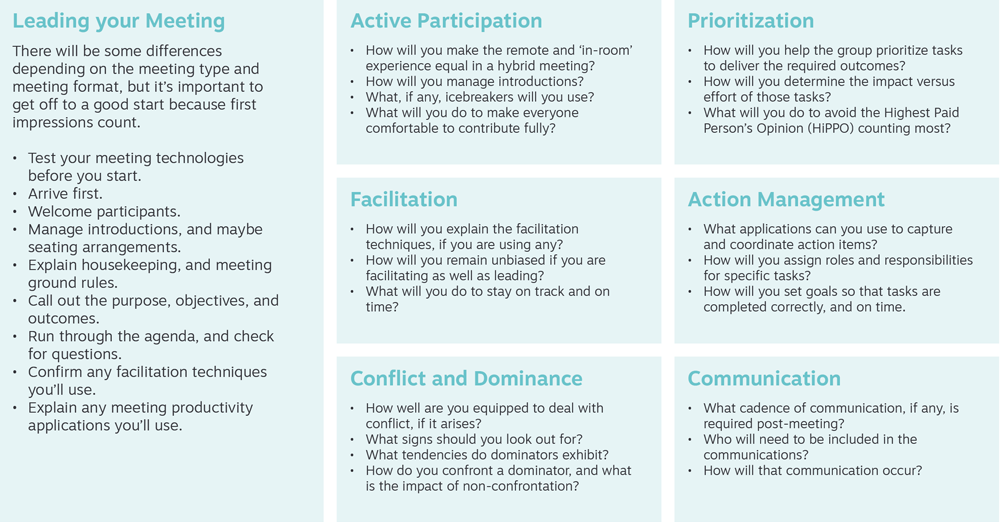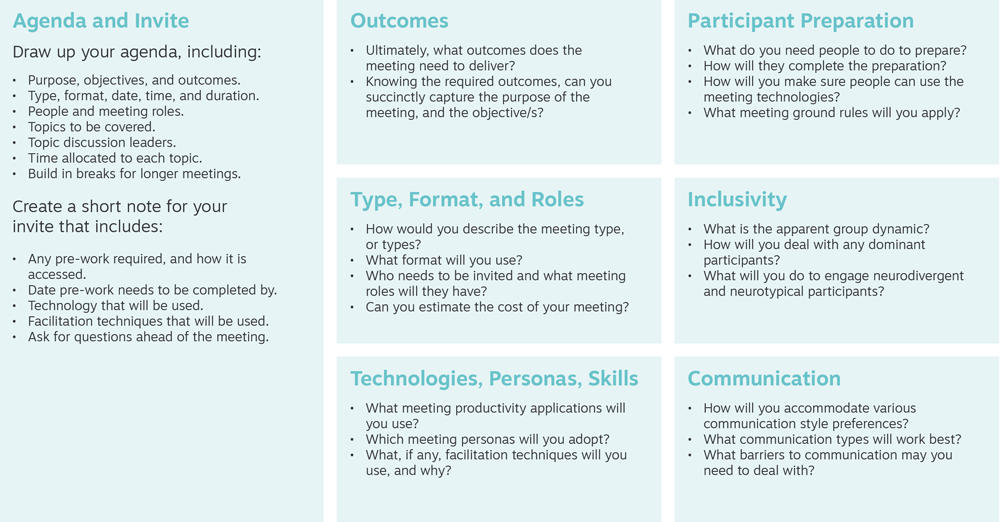Quantifying the Need for Change
90% of all workplace tasks and outputs involve meetings at some point in the work flow.
Source: Global Meetings Survey
80%
of all meetings are generated by 20% of the workforce
16
working years is what team leaders will average in meetings
50%
of total meeting time could be eradicated with no impact
91%
of meeting leaders never calculate the cost of their meetings
72%
of people rarely reject a meeting regardless of the detail provided
88%
of people are regularly in back-to-back meetings
87%
of companies don't have a meetings budget or strategy
65%
of meetings don't specify a purpose or expected outcomes
44%
of meetings have no post-meeting actions or follow-up at all
Meetings Impact Everything
Meeting culture and organzational culture go hand-in-hand.
Stop
Most organizations have no meeting strategy, nor a meeting budget, and have not invested in developing the meeting productivity skills of their people.
Collaborate
Most people have never been asked about their meeting experiences or preferences, yet meetings influence almost everything we do at work.
Listen
It’s time to take meetings seriously, recognize the impact that they have, and commit to generating better business outcomes with fewer meetings.
The World's First Meeting Design Framework
Based on the world's largest ever study of meeting experiences and preferences.
Click images to reveal more
3 meeting design phases
6 meeting design steps
3 meeting design canvases
9 meeting design blocks
115 cards to guide you on your journey...
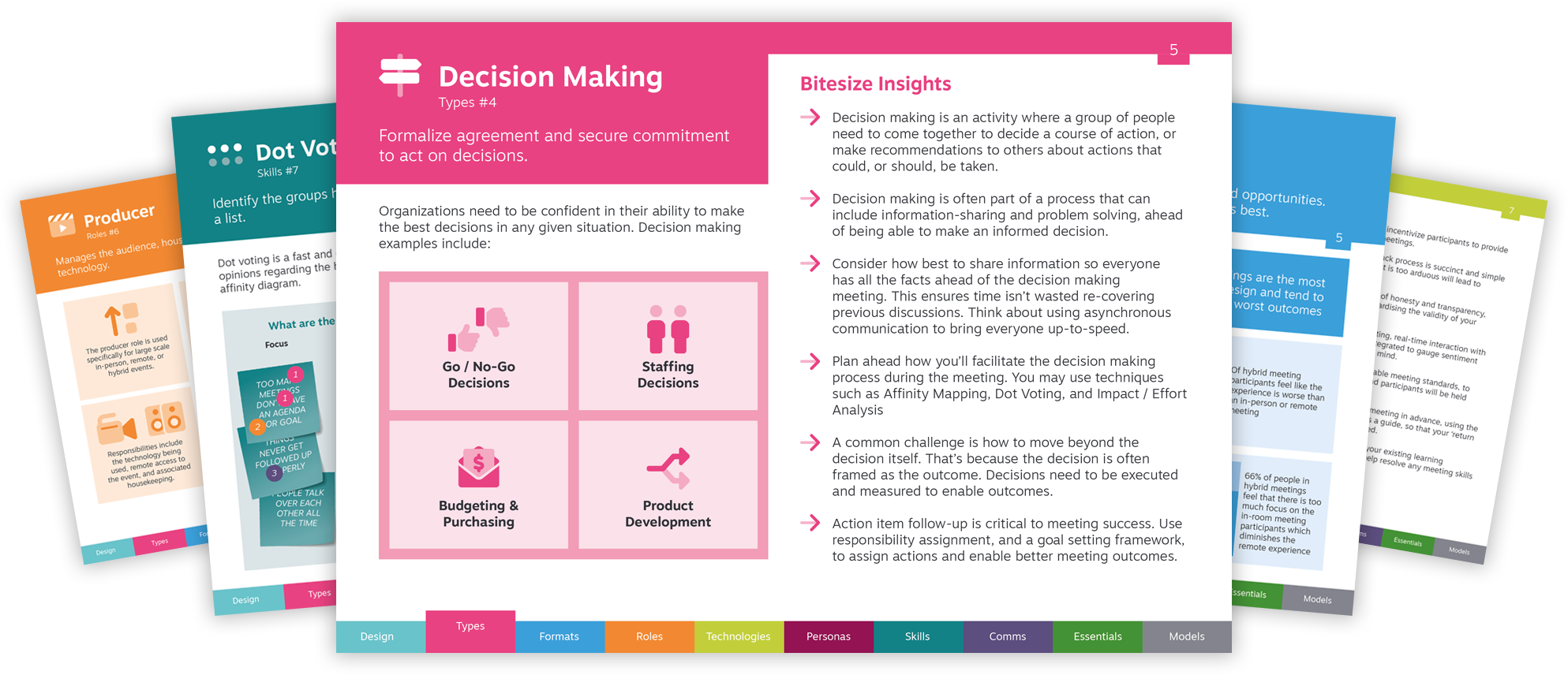
A physical and digital learning experience to enable change.
The Better Meetings Ambassadors' Program
Better Meetings Cards
A physical and/or digital pack of the Better Meetings by Design cards to guide the design process.
Digital Learning Experience
Purpose built digital content providing the approach, tools, and techniques for meeting design.
Global Meetings Data
Insights to inform your meeting strategies from our Better Meetings Research & Global Meetings Survey.
Better Meetings Community
Better Meetings Communities to accelerate change through the sharing of ideas and experiences.
Eradicate unnecessary meetings
At least 25% of your meetings could be removed from your diary, without there being a negative impact.
Significantly reduce the number of meetings you schedule by proving whether, or not, a meeting is the correct course of action by using the Meeting Decision Tree.
Get more done in less time
Good pre-meeting design will streamline the in-meeting experience. Reconsider how much time you allocate for your meetings.
Well designed meetings allow you to do more, in less time. Reduce 60 minute meetings to 50 minutes, and 30 minute meetings to 20 minutes. Apply the 20:50 Rule.
Design enables better meeting outcomes
Great meetings don’t happen by chance, they happen by design.
Well-designed meetings remove uncertainty, simplify complexity, and eliminate ambiguity for everyone. People know why they’re invited, what they need to do to prepare, the contribution they will make, and what the purpose, objectives, and outcomes are.
Start Your Journey Today...
Better Meetings Ambassadors' Program - Ultimate Bundle
Digital Only Bundle
Back to top
